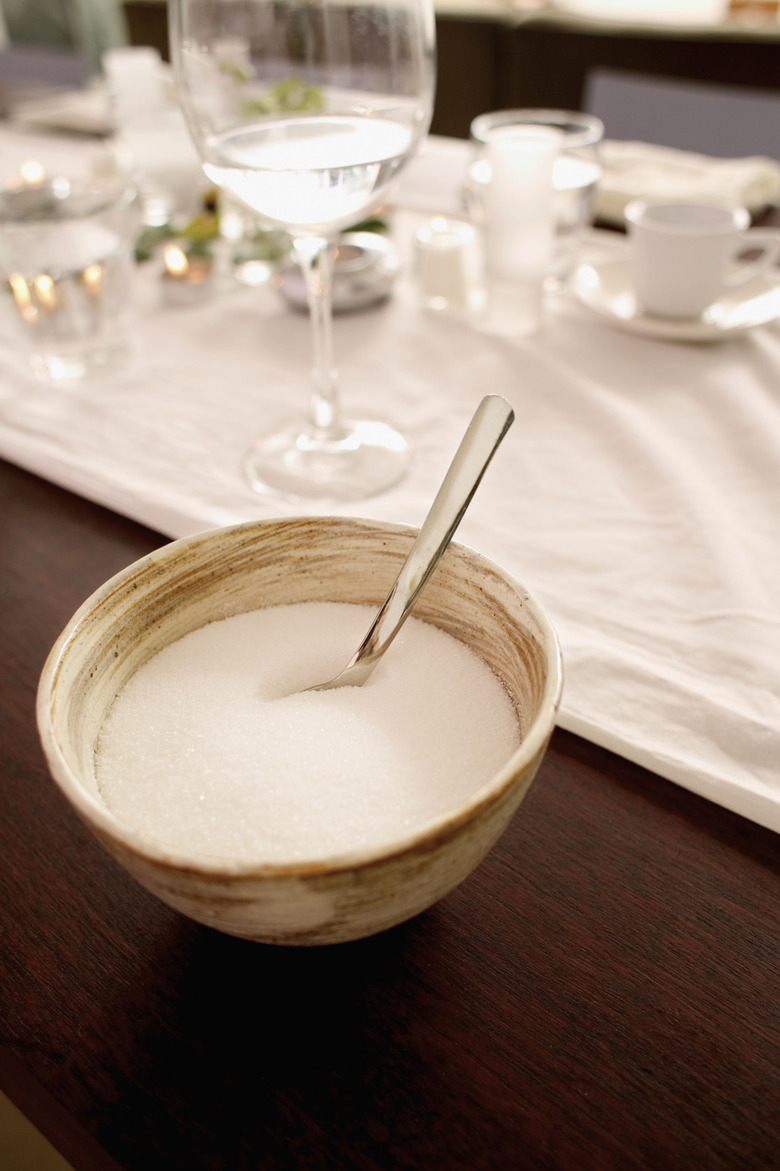What Is Necessary For Glycolysis To Begin?
Glycolysis is the process of deriving energy in the form of ATP (adenosine triphosphate) from the six-carbon sugar molecule glucose (C6H12O6). This series of ten rapid-fire reactions occurs in all cells in nature. In single-celled organisms such as bacteria, it is almost always the only source of cellular energy.
In multicellular organisms such as animals, plants and fungi that have the cellular equipment to use oxygen in their reactions, glycolysis is just the first step of cellular respiration. Per molecule of glucose, cellular respiration as a whole produces **36 to 38 ATP,** and glycolysis alone produces only two ATP.
Glycolysis: Summary
Glycolysis: Summary
After a glucose molecule diffuses into a cell through the cell membrane, it has a pair of phosphate groups attached to it in the course of being rearranged. It is then split in two, and the resulting identical three-carbon molecules eventually become pyruvate. The net gain of glycolysis is two ATP.
On a more granular level, glycolysis is the extraction of energy held in the bonds of glucose molecules for the use of that energy by the cell, with the cost to the glucose molecule being broken down into something else.
Basic Requirements and Reactants of Glycolysis
Basic Requirements and Reactants of Glycolysis
The ten different reactions of glycolysis all require their own specialized enzymes, which are proteins that greatly speed up reactions inside cells. The cell can control the speed of glycolysis, and thus the rate of energy availability, by making certain enzymes more available or less available.
Only glucose is required as a reactant at the very start of glycolysis, but along the way, two ATP must be provided to push the process to its midpoint. After the molecule is split, the process requires a steady supply of **NAD+** to proceed.
Notably, oxygen is not required for glycolysis, and in its absence, glycolysis can be kept going by fermentation. This process converts pyruvate to lactate, and in so doing delivers much-needed NAD+ to glycolysis through the conversion of NADH2.
Initial Glycolysis Steps
Initial Glycolysis Steps
When glucose enters a cell, it is phosphorylated (i.e., has a phosphate attached by an enzyme). It is then rearranged into another six-carbon sugar, fructose. This molecule is phosphorylated a second time at a different carbon atom, at which point the first phase of glycolysis is complete.
This is often called the **"investment phase"** of glycolysis, because even though the overall outcome is the provision of energy, the cell must incur a modest loss first. The two ATP needed to provide phosphates in this phase are thus an investment, but one that always pays off.
Later Glycolysis Steps
Later Glycolysis Steps
In the start of the so-called **"return phase,"** the six-carbon, doubly phosphorylated fructose molecule is split into two very similar three-carbon molecules, each with its own phosphate group; all of one is rapidly converted into the other, glyceraldehyde-3-phosphate.
The now-identical molecules are rearranged and phosphorylated and rearranged again a few times into pyruvate (C3H4O3). In the final reactions, which require NAD+, the twin molecules give up their phosphates in the name of ATP, meaning that this phase produces four ATP. Thus glycolysis yields two ATP overall after accounting for the two ATP "spent" in the first phase.
Products of Glycolysis
Products of Glycolysis
In the end, the products of glycolysis are pyruvate, NADH2, two liberated hydrogen atoms and ATP. Since the initial product is glucose only and ATP appears later, the overall equation for glycolysis is:
C6H12O6 + 2 ATP + 2 NAD+ 2 C3H4O3 + 4 ATP + 2 NADH + 2 H+
The pyruvate then proceeds to the mitochondria for aerobic respiration if enough oxygen is present (which in humans is most of the time) but remains in the cytoplasm for fermentation to lactate if the oxygen level is insufficient.
Cite This Article
MLA
Beck, Kevin. "What Is Necessary For Glycolysis To Begin?" sciencing.com, https://www.sciencing.com/necessary-glycolysis-begin-19634/. 31 July 2019.
APA
Beck, Kevin. (2019, July 31). What Is Necessary For Glycolysis To Begin?. sciencing.com. Retrieved from https://www.sciencing.com/necessary-glycolysis-begin-19634/
Chicago
Beck, Kevin. What Is Necessary For Glycolysis To Begin? last modified March 24, 2022. https://www.sciencing.com/necessary-glycolysis-begin-19634/
